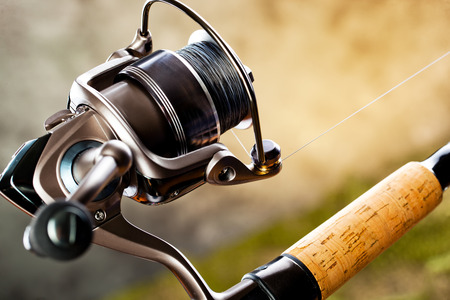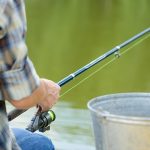1. Understanding Your High-End Fish Finder
High-end fish finders are essential tools for serious anglers who want to make the most of their time on the water. These advanced devices go far beyond basic sonar, offering a range of features designed to provide detailed underwater information and boost your fishing success. Before diving into maintenance and troubleshooting, it’s important to break down what makes these premium units unique—and how you can spot when something isn’t quite right.
Main Features of High-End Fish Finders
| Feature | What It Does | Whats Normal? |
|---|---|---|
| CHIRP Sonar | Sends a range of frequencies for clearer images and better target separation | Crisp, detailed arches or icons showing fish and structure |
| Side Imaging | Scans both sides of your boat for wide-area views of the bottom | Consistent, high-resolution side views with minimal distortion |
| Down Imaging | Provides photo-like images directly beneath the boat | Sharp vertical images of fish, debris, and structure below your position |
| GPS & Mapping | Tracks your location, marks hotspots, and helps with navigation | Accurate mapping and smooth tracking without sudden jumps or signal loss |
| Networking Capabilities | Connects with other devices (radar, chartplotters, etc.) onboard your boat | Reliable communication and data sharing between connected electronics |
| Touchscreen Displays | User-friendly controls for easy adjustments and viewing options | Responsive touch functions; clear visuals in various lighting conditions |
How to Know What’s Normal—and What’s Not?
The key to keeping your fish finder in top shape is understanding how each feature should perform under normal conditions. For example, CHIRP sonar should produce clear arches—if you start seeing blurry returns or missing sections, that’s a red flag. Side imaging should give you consistent images on both sides; if one side looks odd or blank, there may be an issue with your transducer placement or connection.
Common Signs Something’s Off:
- Dropouts in sonar readings or patchy images on the screen.
- No GPS fix or erratic position jumps on your maps.
- The display becomes sluggish or unresponsive to touch.
- Error messages about networking devices losing connection.
- Mismatched depth readings compared to known water depths.
Tip:
If you’re ever unsure whether something is normal, compare your unit’s performance with its manual or check out online forums where other American anglers share screenshots and advice. Recognizing these patterns early helps prevent minor glitches from turning into major headaches later on.
2. Routine Maintenance to Maximize Lifespan
Keeping your high-end fish finder in top shape isn’t just about having the latest tech—it’s about keeping it running smoothly season after season. Regular maintenance is key for American anglers who rely on their gear for those big catches, whether you’re out on a Minnesota lake or deep sea fishing off the Florida coast. Here’s how you can make sure your fish finder stays reliable year-round.
Basic Cleaning: Keep It Spotless
Dirt, saltwater, and grime can mess with your display and connections. A quick wipe-down after every trip goes a long way. Use a soft cloth and a gentle cleaner—avoid harsh chemicals that could damage screens or seals. Don’t forget to clean the transducer too, since algae buildup or barnacles will reduce sensitivity.
Cleaning Checklist
| Part | What to Clean With | How Often |
|---|---|---|
| Screen/Display | Microfiber cloth & mild soap solution | After every trip |
| Transducer | Soft brush & water; remove any debris or growth | Monthly (or more often in saltwater) |
| Cables & Connectors | Dry cloth; check for corrosion | Every month |
| Mounting Brackets | Fresh water rinse; inspect for cracks or rust | Every 2-3 months |
Check Connections: No Loose Ends
Your fish finder depends on solid electrical connections. Before each fishing trip, make sure all cables are tight and free from corrosion. Saltwater especially can eat away at connectors fast—use dielectric grease to protect them if you’re fishing along the Gulf Coast or in brackish waters.
Troubleshooting Tip:
If your unit flickers or won’t power up, double-check the battery terminals and fuse. Sometimes a simple cable reseating solves mysterious glitches.
Update Your Software: Stay Current
Manufacturers like Garmin, Humminbird, and Lowrance regularly roll out software updates to fix bugs and add new features. Check their websites every few months or set up automatic updates through Wi-Fi if your model allows it.
How to Update:
- Visit the manufacturer’s support site.
- Download the latest firmware to an SD card (if needed).
- Insert into your fish finder and follow onscreen instructions.
- If your unit connects via Wi-Fi, use the update feature in settings.
Seasonal Storage: Prep for Off-Season
If you store your boat or gear during winter or hurricane season, remove your fish finder and keep it indoors. Extreme cold or heat can shorten its lifespan. Store it somewhere dry, out of direct sunlight, and away from freezing temps.
With these practical routines, you’ll be ready for every fishing season—and never miss a bite because of a tech hiccup!
![]()
3. Troubleshooting Common Issues
Step-by-Step Guidance for Diagnosing and Resolving Problems
Even the best fish finders can run into issues from time to time. Whether youre facing signal loss, inaccurate readings, or display glitches, don’t worry—most problems are easy to troubleshoot with a little know-how. Here’s a straightforward guide to help you quickly diagnose and resolve the most common high-end fish finder problems.
Common Fish Finder Issues and Solutions
| Issue | Possible Cause | Step-by-Step Fix |
|---|---|---|
| Signal Loss | Poor transducer connection, interference, or incorrect settings |
|
| Inaccurate Readings | Miscalibrated settings, dirty transducer, or mounting angle issue |
|
| Display Glitches | Software bugs, low battery, or loose display cable |
|
Quick Tips for Smooth Operation
- Keep It Clean: Regularly wipe down your screen and transducer for clear imaging.
- Secure Your Connections: Always double-check wires before each trip out on the water.
- Stay Updated: Install manufacturer software updates to get rid of bugs and add new features.
- User Manual: Keep your manual handy—it’s packed with model-specific troubleshooting advice!
If You’re Still Stuck…
If these steps don’t solve your issue, reach out to customer support with your model number and a description of what’s happening. Most brands in the U.S. offer great tech support for anglers who want their gear working perfectly every trip!
4. Dealing with Environmental Challenges
Protecting Your Fish Finder from Saltwater Corrosion
Saltwater is tough on electronics, and high-end fish finders are no exception. If you’re fishing in saltwater environments like the Gulf Coast or the Atlantic, it’s important to rinse your fish finder and its transducer with fresh water after every trip. Make sure all connectors are dry before storing. For extra protection, use dielectric grease on electrical contacts to prevent corrosion.
Tips for Saltwater Protection
| Action | Why It Matters |
|---|---|
| Rinse with fresh water after each use | Removes salt residue that can corrode components |
| Dry all parts thoroughly | Prevents moisture-related damage and corrosion |
| Apply dielectric grease to connectors | Keeps electrical connections safe from salt intrusion |
| Store in a dry place | Avoids long-term exposure to humid, salty air |
Handling Extreme Weather on American Waters
Whether you’re braving sudden summer storms on Lake Michigan or dealing with chilly mornings in the Pacific Northwest, weather can take a toll on your gear. Always check that your fish finder is rated for the temperatures you expect. Use protective covers when not in use, and never leave your device exposed to direct sunlight for long periods—heat can damage screens and internal circuits.
Extreme Weather Best Practices
- Use weatherproof covers: Protects against rain, spray, and sun damage.
- Avoid rapid temperature changes: Prevents condensation inside the unit.
- Check manufacturer specs: Make sure your model is built for cold or hot climates as needed.
- Remove the unit during storage: Take portable models home when not in use, especially over winter.
Guarding Against Physical Shocks and Bumps
Lakes and rivers across the U.S. can get rough—think bouncing over boat wakes on Lake Erie or running aground in shallow Florida flats. Secure mounting is key. Use sturdy brackets rated for your fish finder’s size and weight, and double-check all screws before heading out. If you hit rough water often, consider shock-absorbing mounts for extra peace of mind.
Common Sources of Physical Damage & Prevention Tips
| Potential Risk | How to Prevent It |
|---|---|
| Bumpy rides & waves | Install shock-absorbing mounts; check hardware regularly |
| Drops during transport | Always remove portable units before trailering or hauling gear |
| Bumping into docks or other boats | Position fish finder away from high-traffic areas on your vessel |
| Poor mounting surfaces | Select solid locations; avoid thin fiberglass or unstable panels |
Your Routine Makes All the Difference!
The best way to keep your high-end fish finder working perfectly through every season is regular care. By rinsing off salt, shielding against weather, and guarding against knocks and bumps, you’ll be ready for whatever American waters throw at you—and always have an edge finding more fish.
5. When to Call in the Pros
Even if you’re handy with a screwdriver and have your fish finder’s manual memorized, there are times when it’s best to call for professional help. Here are some key indicators that you should reach out to tech support or a certified marine electronics expert—so you’re never left high and dry out on the water.
Signs You Need Professional Help
| Issue | DIY Fix Possible? | Time to Call the Pros? |
|---|---|---|
| Fish finder won’t power on even after checking connections and battery | No | Yes – could be an internal hardware problem |
| Display screen is cracked or has internal condensation | No | Yes – screen repairs require special tools and know-how |
| Software update fails or causes system crashes | Sometimes | If repeated attempts fail, yes – let the experts handle firmware issues |
| No sonar signal, even after cleaning transducer and checking cables | No | Yes – transducer or wiring might need pro inspection or replacement |
| Unit constantly resets or freezes during use | No | Yes – may be an internal circuit board issue |
| Error codes you can’t find in the manual or online help guides | No | Yes – contact manufacturer’s tech support for guidance |
What to Have Ready Before You Call Tech Support
- Model and Serial Number: This info is usually found on the back of your unit or in the settings menu.
- Description of the Issue: Take notes on what happened, what you’ve already tried, and any error messages.
- Date of Purchase/Warranty Status: Know if your unit is still under warranty—this can save time and money.
- Photos or Videos: If possible, snap clear images of error screens, cable setups, or damaged parts. It helps tech support diagnose faster.
Pro Tip: Don’t Void Your Warranty!
If your fish finder is still under warranty, avoid taking it apart yourself. Unauthorized repairs can void coverage and lead to bigger headaches down the line.
Finding Certified Marine Electronics Experts Near You
If your issue isn’t covered by basic troubleshooting, search for “certified marine electronics repair” in your area or check the manufacturer’s official service locator online. Many brands partner with local pros who know their products inside and out, getting you back on the water fast—and with peace of mind.
6. Recommended Accessories for Optimal Performance
To keep your high-end fish finder running smoothly and to make the most of your investment, choosing the right accessories is just as important as regular maintenance. U.S. anglers love to customize their gear, and there are several must-have add-ons that can help protect, upgrade, and optimize your fish finder’s performance on the water.
Must-Have Add-Ons for U.S. Anglers
| Accessory | Purpose | Why Anglers Love It |
|---|---|---|
| Screen Protectors | Shield the display from scratches, water spots, and sun glare. | Keeps the screen clear and easy to read in all conditions. |
| Mounting Solutions | Secure your fish finder with adjustable mounts or quick-release brackets. | Makes it easy to reposition or remove your unit for storage or theft prevention. |
| Protective Covers | Safeguard the entire unit when not in use. | Adds an extra layer of defense against dust, rain, and UV rays. |
| Portable Power Packs | Ensure a reliable power source for long fishing days. | Great for kayak anglers or anyone who wants backup power. |
| Cable Management Kits | Organize and protect wires from tangling or damage. | Keeps your boat tidy and prevents accidental disconnections. |
| Transducer Shields & Mounts | Protect the transducer from impact with rocks or debris. | Ideal for shallow-water fishing where obstacles are common. |
Popular Upgrades for Enhanced Tech Performance
- Networking Modules: Connect multiple devices for shared sonar and GPS data—perfect for tournament anglers or those with larger boats.
- Sun Visors: Attach to your display to block out harsh sunlight, making details easier to see during midday trips.
- Bluetooth Remote Controls: Operate your fish finder remotely so you can focus more on fishing and less on fiddling with buttons.
- Custom Skins and Decals: Personalize your gear while adding a thin layer of scratch protection—very popular among American bass anglers!
Troubleshooting Tips: Accessory Edition
- If you notice connectivity issues after adding new accessories, double-check all connections and make sure cables are compatible with your device model.
- Avoid cheap mounting solutions that may vibrate loose; opt for marine-grade products trusted by local anglers instead.
- If using a power pack, monitor voltage output to prevent damage to sensitive electronics in high-end units.
Your Gear, Your Way
The right accessories don’t just protect your high-end fish finder—they make every trip easier and more enjoyable. Whether you’re chasing largemouth bass on Lake Okeechobee or trolling offshore in California, these upgrades help keep your tech in top shape so you can focus on landing that next big catch!


